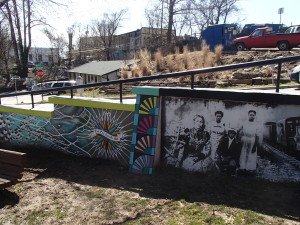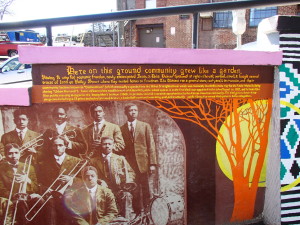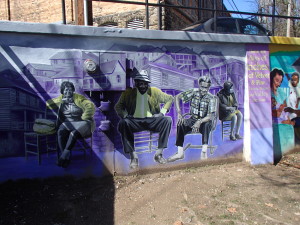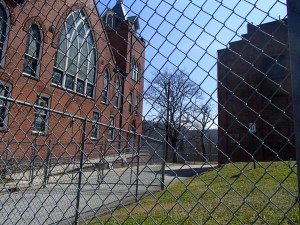The East End of Asheville was described by a past resident as “a community, a neighborhood, self contained…It had hair-dressers. There were grocery stores, funeral parlors, cab stands. Eagle Street had doctors’ and lawyers’ offices, dentists’ offices, churches. You had theaters. We had swimming pools. you had barbershops and the Dew Drop Inn. Miss McQueen’s restaurant was across from YMI. Rolands Jewelry and Chisholm’s sold everything.” What past East End resident, Ralph Bowen, is describing is a bustling African American community situated on the edge or what may now be considered central downtown Asheville. This is a historic community whose origins come out of slavery. The East End had been a vibrant black community dating back to the 1880’s “although African American presence dates back to the earliest times of slavery in Western North Carolina.” Asheville’s East End was likely the site of the homes of James Patton’s family’s slaves prior to the civil war. After the Civil War it is here that newly freed African Americans gathered to build their community which strove to provide social, commercial, religious, and educational opportunities in a time of segregation. The East End was composed of a multitude of black owned businesses and countless homes covered over four hundred acres. It was a cultural center, a neighborhood, a community that shared a cohesive identity. This area encompasses a vibrant and rich piece of the history of Asheville. Sadly the process of Urban Renewal that took place in the 60’s and various other factors have left this once thriving community hardly recognizable. Not much is left – a few churches, a handful of businesses, and boarded up buildings remain. Fortunately there is a renewed interest in paying respect and revitalizing this important part of Asheville’s past. These efforts can be seen in a collaborative effort to create a mural in Triangle Park, which stands in the East End down off Eagle Street. The mural is a work in progress but is nearly complete. It pays respect to the rich heritage of the East End and the countless contributions made by its residents. While there is not much left to be seen down in the East End many who lived there remember the sense of community and they help to keep the spirit alive through their accounts and efforts to revitalize this once thriving landscape.





